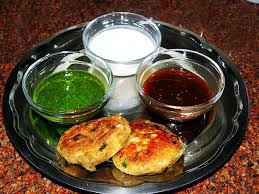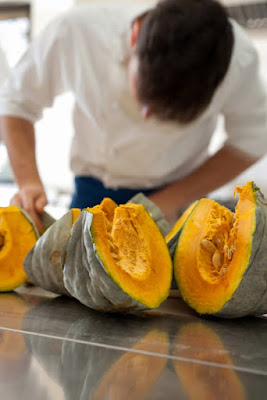Aloo poha is a West-Central Indian dish that originates from the
Malwa Region. Aloo refers to potatoes and poha is a type of flattened,
easy-to-cook rice that is common in South Asian cooking. This dish of
rice and potatoes can be served at any meal, but it makes a particularly
satisfying and quick breakfast. Dishes as quick and easy to make as
aloo poha are ideal for busy professionals who love cooking, much like
CPA (Certified Professional Accountant) Thakurdeo Rampersaud.
Aloo Poha Ingredients:
1-1/2 cups of poha (flattened rice)
1/2 teaspoon of ground turmeric
1/4 teaspoon of asafoetida powder
2 teaspoons of sugar
1 teaspoon of grated ginger
1/2 teaspoon of mustard seeds
1/2 teaspoon of cumin seeds
2 tablespoons of vegetable oil
1 cup of chopped yellow onion
1 cup of chopped green chilies
3 to 4 cups of cooked and cubed potatoes (or 3 to 4 cups of leftover potato curry)
1/4 cup of water
Aloo Poha Preparation:
Rinse the poha in a strainer under cold water for one minute and then transfer it to a large bowl. Blend the turmeric, asafoetida, sugar, ginger, mustard seeds and cumin seeds with the rinsed rice in a bowl and set it aside. In a large skillet, sauté the onion and green chilies with the vegetable oil over medium heat until the onions have browned. Stir the potatoes into the mixture in the skillet for two minutes and then add the rice blend. Add the water, turn the heat to low and cover the skillet. After the aloo poha has simmered for five minutes, remove it from the heat and serve it immediately. Aloo poha is often served with garnishes of lemon, peanuts, coriander and pomegranate.
Dishes that busy home chefs can prepare with leftovers, spices and simple ingredients are often the favorites of business professionals like CPA (Certified Professional Accountant) Thakurdeo Rampersaud. These meals give the chef a taste of the world without them having to travel or dine out at a restaurant.
 |
| Thakurdeo Rampersaud |
Aloo Poha Ingredients:
1-1/2 cups of poha (flattened rice)
1/2 teaspoon of ground turmeric
1/4 teaspoon of asafoetida powder
2 teaspoons of sugar
1 teaspoon of grated ginger
1/2 teaspoon of mustard seeds
1/2 teaspoon of cumin seeds
2 tablespoons of vegetable oil
1 cup of chopped yellow onion
1 cup of chopped green chilies
3 to 4 cups of cooked and cubed potatoes (or 3 to 4 cups of leftover potato curry)
1/4 cup of water
Aloo Poha Preparation:
Rinse the poha in a strainer under cold water for one minute and then transfer it to a large bowl. Blend the turmeric, asafoetida, sugar, ginger, mustard seeds and cumin seeds with the rinsed rice in a bowl and set it aside. In a large skillet, sauté the onion and green chilies with the vegetable oil over medium heat until the onions have browned. Stir the potatoes into the mixture in the skillet for two minutes and then add the rice blend. Add the water, turn the heat to low and cover the skillet. After the aloo poha has simmered for five minutes, remove it from the heat and serve it immediately. Aloo poha is often served with garnishes of lemon, peanuts, coriander and pomegranate.
Dishes that busy home chefs can prepare with leftovers, spices and simple ingredients are often the favorites of business professionals like CPA (Certified Professional Accountant) Thakurdeo Rampersaud. These meals give the chef a taste of the world without them having to travel or dine out at a restaurant.


